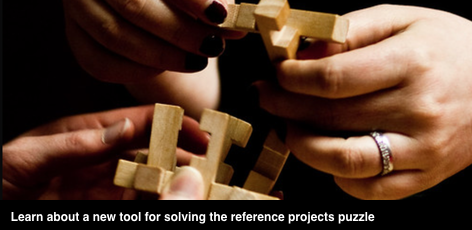This post is intended for individuals managing RFQ responses for infrastructure projects. It gives insight into Complex2Clear’s approach to optimizing the selection of reference projects, based on the scoring criteria of a specific RFQ.
The reference project challenge
RFQs require details of a defined number of reference projects, similar to the one on offer, to demonstrate the capability of each consortium team member. “Similar” is typically defined strictly—e.g. same type of structure (toll highway, bridge, hospital), similar construction constraints (e.g. urban setting, environmental issues), similar size, contracting model, etc. Eligible projects must have been completed recently (say, within five years) and the team member has to have been responsible for a minimum participation (usually 30% ).
Ideal reference projects closely align with the project on offer, showcase the experience and capabilities of the consortium team members and their key individuals (KIs) and—ideally—show member companies and their KIs successfully working together.
How not to select reference projects
Despite these interlocking and inflexible requirements, too often the selection process consists of team member executives sitting around a table tossing out projects based on emotion (“It’s our signature project.”) and/or size, awards won, etc.—instead of making a disciplined effort to match their candidates to the actual evaluation criteria.
This approach is inefficient, since poorly selected projects (if caught during the bid review process) will need to be swapped out last minute. More important, these “passion projects” won’t score well and risk the team not shortlisting for the RFP.
Setting up a project selection workbook
C2C has created a project selection worksheet designed to dispassionately identify projects that will attain the highest scores for both team members and key individuals. Our tool captures the scoring criteria for reference projects and KI’s and provides matrices that rate candidates against scorable criteria and identifies instances of team member and KI past collaboration.
The tool for a DBFOM RFQ, consists of an excel workbook that (on different tabs) tracks KIs, and potential reference projects (initially three more than required), for each of the specified disciplines (Development/Design/Construction/O&M). Evaluation criteria (both pass/fail and extra merit—if provided) are listed on alternate axes, along with the proposed KIs/projects to allow easy assessment of each.
Note: It is also useful to cross-populate the KI information to all project pages to track past collaboration among individuals in different disciplines on past projects referenced in other focus areas. For example: if KIs from the Design Team worked on a project the Constructor is using, that overlap should be tracked in the cases where the Design Team is not using that project itself. These subtle links serve to show evaluators that proponent team members have worked with each other often enough that they are not all relying on the same small pool of relevant projects repeated in each section of the RFQ response.
Completing the project selection worksheets
Set up the selection workbook as early as possible in the proposal effort and distribute to the project lead for each team member. Ask the leads to complete only the worksheets for their role(s) in the consortium. Ideally, this is done before the working project kickoff so that candidate reference projects can be discussed based on rated criteria at the kickoff, bringing additional tangible value to what can otherwise be a superficial “rah-rah” activity.
The entity representing the Developer then has the responsibility to combine this input and ensure the consortium is putting forward people and projects that will score well and that show the past project experience and collaboration the evaluators are looking for.
Payoff: A higher scoring RFQ response
Complex2Clear uses this format and process with all clients as part of RFQ pre-kickoff preparation. Clients appreciate the structure this tool brings to a process that can feel like playing darts in the dark. High-level benefits include: setting expectations and engaging with all consortium team members early; identifying any issues or additional teaming requirements to present a winning RFQ and; allowing all team members to contribute immediately—all of which have shown to improve long term cohesion.


